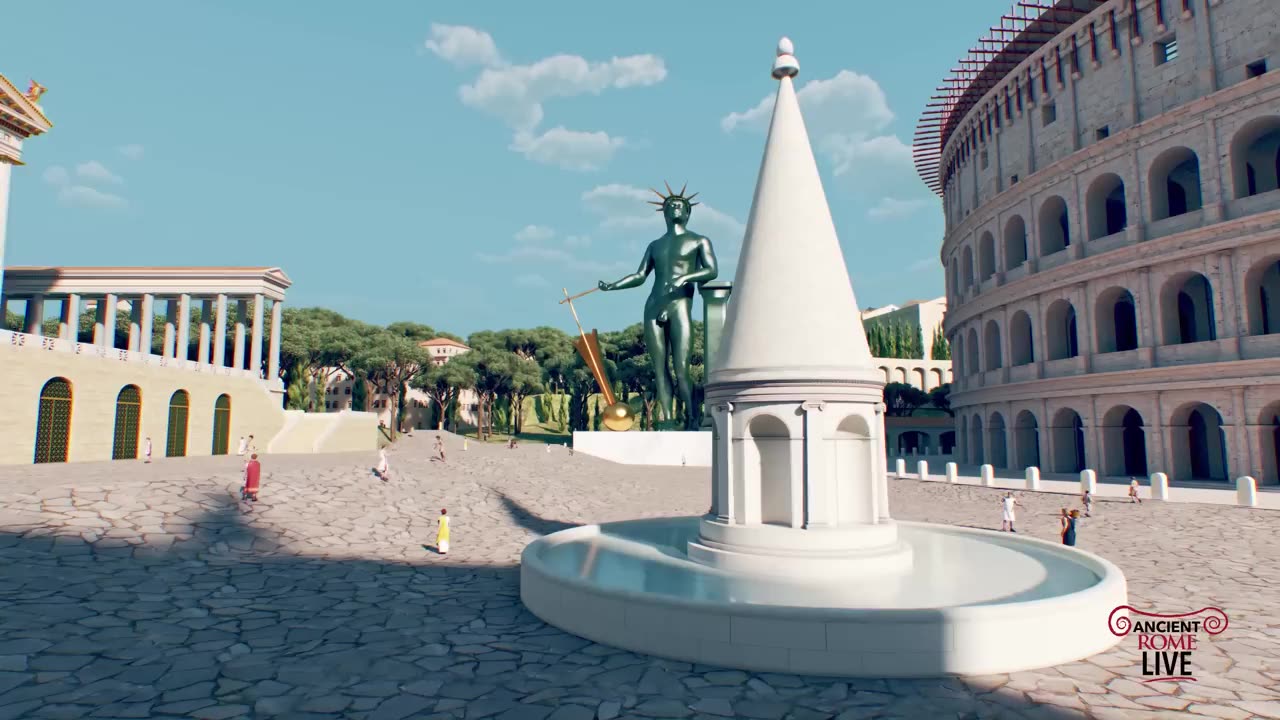Premium Only Content

Ancient Rome Reborn Through Virtual Reality
Virtual Reality (VR) has played a significant role in bringing ancient Rome back to life, allowing people to experience the grandeur of this ancient civilization in a way that traditional mediums cannot convey. Here are several ways in which VR has contributed to the rebirth of Ancient Rome:
1. **Virtual Reconstructions:**
- VR technology enables archaeologists and historians to create detailed virtual reconstructions of ancient Roman structures. This includes recreating iconic landmarks such as the Colosseum, the Roman Forum, the Pantheon, and the Circus Maximus. Users can explore these structures in a three-dimensional space, gaining a sense of their scale and architectural magnificence.
2. **Immersive Tours:**
- VR allows users to take immersive virtual tours of ancient Roman sites. These tours can be guided or self-directed, providing users with the ability to explore various locations at their own pace. It offers a unique opportunity for people around the world to virtually visit historical sites without leaving their homes.
3. **Educational Experiences:**
- VR is being integrated into educational programs to enhance learning about ancient Rome. Students can wear VR headsets to take virtual field trips to ancient Roman cities, witnessing daily life, architectural marvels, and historical events. This interactive and engaging approach helps in making history more accessible and memorable.
4. **Archaeological Visualization:**
- VR assists archaeologists in visualizing and analyzing ancient Roman ruins. By creating virtual reconstructions based on archaeological findings, researchers can better understand how these structures may have looked in their prime. This aids in studying the evolution of architectural styles and urban planning.
5. **Historical Simulations:**
- Some VR applications provide historical simulations, allowing users to experience events from ancient Roman history. This could include witnessing gladiator fights in the Colosseum, participating in Roman festivals, or even exploring the city during different historical periods. These simulations offer a more engaging and interactive learning experience.
6. **Museum Exhibits and Installations:**
- VR is increasingly being used in museums to supplement traditional exhibits. Visitors can wear VR headsets to virtually explore reconstructed ancient Roman artifacts, artworks, and historical contexts. This adds a dynamic and interactive layer to museum experiences.
7. **Cultural Heritage Preservation:**
- VR plays a role in preserving cultural heritage by creating digital archives of ancient Roman sites. This technology can capture detailed 3D scans of archaeological sites, helping to document and preserve them digitally for future generations, even if the physical structures deteriorate over time.
By leveraging the capabilities of virtual reality, scholars, educators, and enthusiasts can step back in time and experience Ancient Rome in a way that was once unimaginable. This technology continues to evolve, offering new possibilities for the exploration and understanding of our rich historical heritage.
-
 LIVE
LIVE
SpartakusLIVE
6 hours agoSaturday SPARTOON Solos to Start || Duos w/ StevieT Later
2,635 watching -
 28:40
28:40
SLS - Street League Skateboarding
8 days agoTOP MOMENTS IN WOMEN’S SLS HISTORY! ALL THE 9’s - Rayssa Leal, Leticia Bufoni, Chloe Covell & more…
8.18K -
 23:00
23:00
Exploring With Nug
14 hours ago $10.27 earnedHis Truck Was Found Crashed in the Woods… But He’s Gone!
59K6 -
 27:09
27:09
MYLUNCHBREAK CHANNEL PAGE
15 hours agoDilmun: Where Life Never Ends
55.8K39 -
 2:58:32
2:58:32
Slightly Offensive
8 hours ago $43.08 earnedHas Trump FAILED US? The ABSOLUTE STATE of The Right Wing | Guest: Nick Fuentes
66.9K37 -
 1:37:05
1:37:05
AlaskanBallistics
3 hours ago $0.67 earnedI Love This Gun PodCast #16
13K3 -
 2:59:26
2:59:26
Twins Pod
12 hours agoEMERGENCY PODCAST WITH ANDREW TATE! - Twins Pod - Special Episode - Andrew Tate
139K144 -
 2:52:01
2:52:01
Jewels Jones Live ®
2 days agoTRUMP SECURES BORDER | A Political Rendezvous - Ep. 113
68.8K36 -
 25:02
25:02
marcushouse
1 day ago $40.62 earnedStarship Just Exploded 💥 What Went Wrong This Time?!
149K76 -
 12:00
12:00
Silver Dragons
1 day agoBullion Dealer Reveals Best Silver to Buy With $1,000
91.9K9